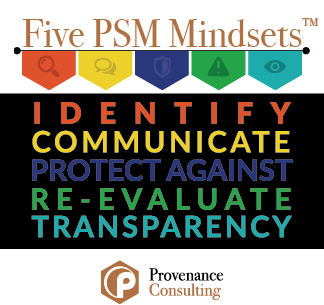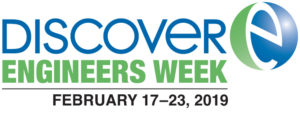In Bloom’s Taxonomy, “evaluation” is the fifth of six levels. Learners progress from remembering, to understanding, to applying, analyzing and then evaluating and finally creating.
One of the most important “evaluating” exercises in Process Safety Management (PSM) is the Process Hazard Analysis (PHA).
In a PHA, a group of people with expertise in the process (operators, engineers, etc.) gather to look at all the equipment and chemistry and technology involved.
They detail out each possible hazard, cause, consequence and safeguard. They review the risks, make recommendations, and put all of this information into a report.
When you re-evaluate something, it’s typically done with an eye towards any changes or new information.
In PSM, we re-evaluate the hazards when we make a change through the management of change (MOC) process or when there has been an incident and we want to see what went wrong and if we missed something in the first evaluation of the hazard.
When you want to evaluate something again, it would seem natural to look at the original evaluation.
In significant incident investigations, the PHA report is often pulled up to determine if something was missed or a recommendation wasn’t completed.
But during the course of an MOC, it is very rare for the original PHA to be referenced.
Even if the project involves significant change and generates its own PHA, it is not always standard practice to reference the original unit PHA.
One reason for this is the great complexity of the information in a PHA and the challenges in finding a specific area.
In short, the PHA details aren’t always easily accessible.
And as I said, it’s not a standard practice. Most MOC procedures I’m familiar with do not include a checkbox for looking at the original PHA.
In my many years as a process engineer, I was never advised to look at the PHA for the unit when doing a change. We simply did our own mini-PHA with the group of engineers and operators on hand.
But what about the great level of time and expertise that had already been invested in the most recent PHA? What if something we changed had been counted on for a safeguard? Maybe we caught it in our project group, but what if we didn’t?
There are many advantages to making PHA results and comments more structured and searchable.
One of those is the opportunity for engineers and operators to easily reference nodes and sections of a unit and review the hazards when a change is being proposed and reviewed.
It is one more way we can all have the best information on hand to make wise and safe decisions.
Our Managing Partner Patrick Nonhof presented a webinar on “Can PHA Be Big Data”. He discusses applicable, practical ways to make your PHA data more useful by addressing the barriers to its usability – lack of structure and lack of accessibility. The possibilities for data analysis and continual value-add on your PHA data is an untapped resource at many facilities. Let us help you realize that potential.

In Star Trek, the ship is protected by a force field called a “shield”. When under attack, the tactical officer will call out the status of the shield’s integrity, e.g. “shields at 70%, Captain.” When shields are down to 10%, you know that a breach is imminent unless they retreat or find a way to defeat their attacker.
In a refinery or chemical plant, there is no one calling out the integrity of our protection systems and procedures every few minutes.
But OSHA has specified three specific process safety elements that are critical to Protect Against the Hazards (one of the Five PSM Mindets™) – Pre-Startup Safety Reviews, Mechanical Integrity, and Hot Work Permits.
Once we’ve identified the hazards, it’s time to do something about it. We’ve seen where danger may strike, so we go to the possible sources. We anticipate what could go wrong and prepare for it.
In a process hazard analysis (PHA), safeguards and layers of protection are identified and counted on. And in our industry, there is a great deal of focus on mechanical integrity and maintaining safety instrumented systems.
In a successful process safety culture, the success or failure of the facility is the responsibility of everyone together – like the crew on Star Trek.
If you are going to help ensure the shields are at maximum strength, here are a few places to start:
The safety of a star ship isn’t just dependent on its shield. It depends upon each crew member doing their part and working as a team.
The safety of a facility isn’t just based on the safeguards put in place, but upon each person inside the gate doing their part.
You are more than helping maintain the “shield” – YOU are an integral part of the shield preventing catastrophe so that we may all “live long and prosper”.

Most people enjoy a good mystery.
Writers like Agatha Christie are successful in bringing us into the intrigue by giving just enough clues for us to come up with our own hypothesis of “whodunit”, while withholding enough insight so that at the end, the master detective solves the case and uncovers the unexpected villain.
We are excited by the challenge of looking for clues, reading between the lines, searching for the truth.
For me as an engineer, that love of investigating a mystery contributes to the thrill of problem solving.
When it comes to understanding process hazards in a facility, knowing the “whodunit” of process hazards goes beyond elementary entertainment.
OSHA designated the elements of Compliance Audits and Trade Secrets to make sure that everyone at the facility knows the whole story, not just a few clues. Nothing is meant to be hidden from the employee, and no one wants a “surprise ending.”
These two elements also make up the fifth PSM Mindset™, Transparency.
Audits and sharing trade secrets allows everyone who needs it to see the real story of the process: What are the risks, the protections, the gaps, and the strengths of the processes and procedures in place?
As a mindset, it is also about each person on-site being willing to be transparent.
Are you willing to share your stories – what worked and, even more important, what hasn’t worked and why?
We all learn more from stories than from a list of facts. We can put ourselves into the story, and our minds remember stories especially when the story invokes an emotion – This makes the memory more “sticky.”
If you have years of experience in the petrochemical industry, you have stories to share. If you are new to the industry, there are lots of stories to hear, so be listening.
I have a vivid memory of a leak detected in the Hydrofluoric Acid Alkylation Unit flare accumulation drum.
Typically the unit would be shut down so the pipe could be replaced. But that would send all the hazardous materials in the unit right through the leaking pipe.
I remember meetings with operators, engineers, maintenance, mechanical integrity inspectors and others to come up with a plan to safely address the issue.
We came up with a solution and put a temporary Management of Change form in place, formally getting everyone to sign and stack hands on the plan.
The plan worked, the pipe was bypassed and replaced, and I was left with a lesson on the importance of all eyes looking at the potential solution.
I remember the arguments, the concerns, the checking and double checking that was involved. In the end, it was a success.
The hazard was addressed because everyone was transparent about their ideas and concerns.
If you see something that doesn’t align with a procedure or standard, that is a story that needs to be shared.
Is a level gauge not reading accurately? Don’t dismiss it, share that information.
Is a procedure or policy cumbersome and difficult to navigate? The complexity may be necessary but on the other hand, a simpler approach may work instead.
These are also stories that need to be told. Each story may be part of a bigger picture.
Remember, there is no Sherlock Holmes or master detective on staff, so we all must work as a team to ensure the hidden risks are brought to light and the hazards are exposed.

Provenance Account Director (Nuclear Engineer)
About Dylan
Job Title: Account Director
Hometown: Pflugerville, TX
Degree (College/University): Bachelor of Science in Nuclear Engineering (Texas A&M University)
Years with Provenance: 5 years
Years in the Industry: 5 years
Work Site: Freeport, TX

The Story
Second time was the charm for Dylan Misslin. After leaving college to pursue an opportunity in car sales, Dylan found himself faced with a choice about his future. He’d been out of school for ten years – could he really go back?
On a test drive, a gentleman encouraged him, “Dylan, you wouldn’t believe how easy it is to go back and finish your degree.” While this lit the fuse for his return to engineering, Dylan will admit it was not “easy”.
“I worked at least 45 hours a week and had two kids in the process of trying to get my nuclear engineering degree,” he explains. “I basically worked, studied, or went to school 7 am – midnight, six days a week for three years and spent all of Sunday with my family.”
That determination to finish what he started is part of what makes Dylan such an excellent leader. He’s also extremely adaptable, which is how he ended up in the oil and gas industry instead of nuclear.
“The Fukushima, Japan, nuclear incident happened right after I was accepted back in school which put a damper on the demand for nuclear engineers. That’s how I ended up in the oil and gas industry and with Provenance. I’d say it’s worked out pretty well for me,” he reflects.
While plans changed, his resolve to obtain his degree never wavered. “I better appreciated what I was learning the second time around, and when I put my passion into it, it was doable,” he says.
Today, Dylan is one of the Provenance Account Directors. He is responsible for developing scopes of work, planning, staffing, execution, quality control and managing team members that work on a variety of PSM related projects for our clients. He’s also accountable for maintaining a positive relationship with the client, continuing to win work, and ensure projects won are profitable.
Managing Partner Patrick Nonhof adds,
“Dylan’s career has focused on client management and account growth. Dylan has been very successful in translating the problem-solving skills required for ‘traditional’ engineering into solving business problems.”
Recently, Dylan has focused on better understanding the nuances of how to develop and maintain programs that comply with regulation. He recently delivered a well-received webinar on Process Safety Management Compliance Audits focused how to build and guide your audit team to achieve success.
His humor and personality shine during the presentation as images of and references to movies and TV shows (especially “The A-Team”) pop up throughout, a true representation of his personality.
Professionally, his confidence and “comfort in his own skin” enable him to control the room as well as encourage others to feel comfortable and participate.
While it may have taken him a little longer than others, Dylan’s career in engineering has shown to be mutually beneficial for him and Provenance. His story proves that it is never too late to pursue your calling – and engineering is not just for the traditional student.
As far as landing outside of the nuclear industry, Dylan says, “Initially, I wanted to be a part of delivering clean nuclear energy to the world. Now I keep traditional energy safe.”
Engineers Week 2019